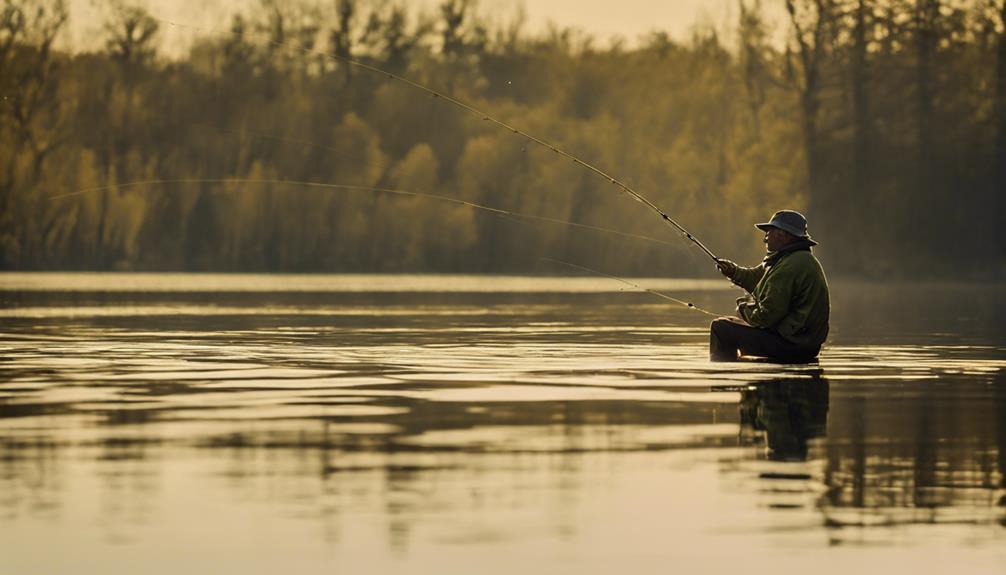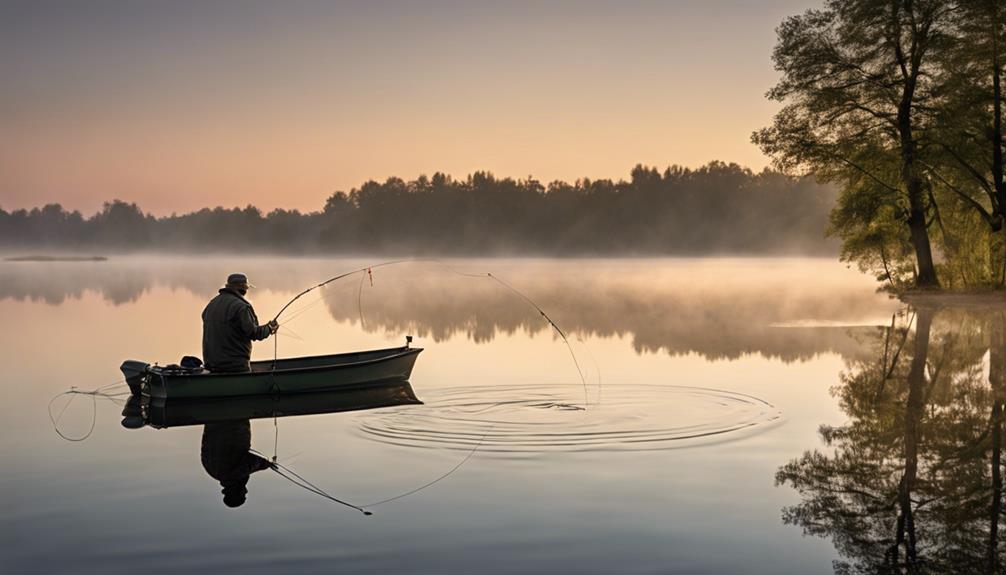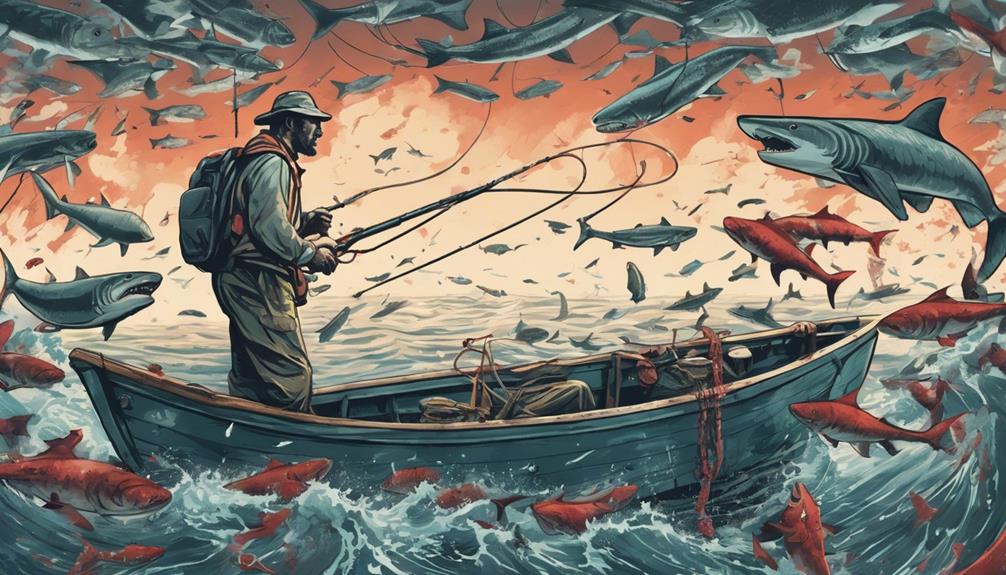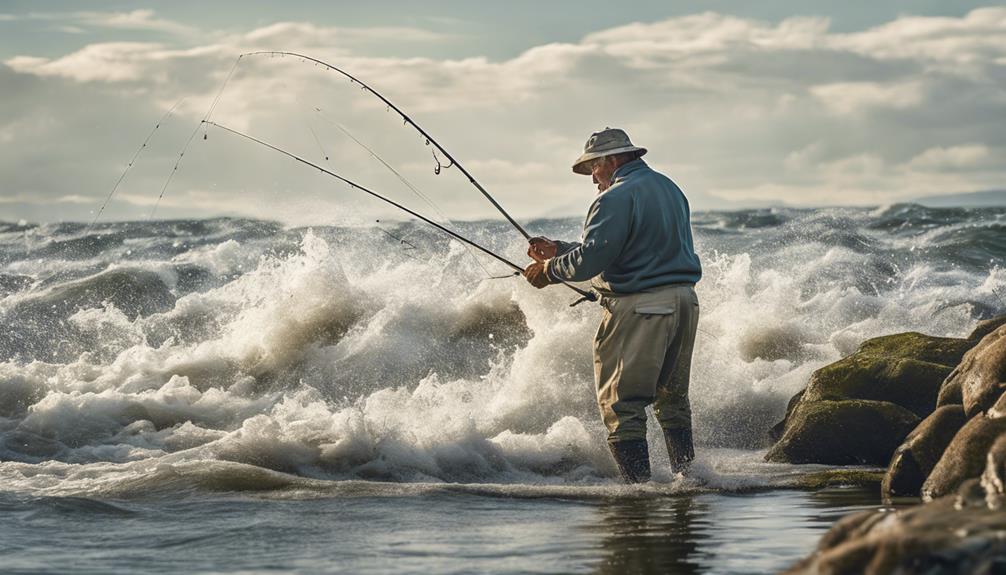When it comes to catching yellow perch, mastering the art of effective angling techniques can make all the difference between a day of empty hooks and a haul that will have you grinning from ear to ear.
From selecting the right gear to understanding the nuances of bait choices and presentation techniques, there's a myriad of factors to consider.
But fear not, as we delve into the intricate dance between angler and fish, you'll soon discover the secrets to unlocking consistent success on the water.
Gear Selection
When gearing up for yellow perch angling, ensure your equipment matches the size and behavior of your target fish. For rod options, a light to ultralight spinning rod around 5 to 6 feet in length works well. Pair this with a matching reel that has a smooth drag system to handle the perch's feisty nature. Opt for a reel size that can accommodate 2 to 6-pound test line for optimal performance.
When it comes to line types, monofilament in the 2 to 6-pound test range is a popular choice among anglers targeting yellow perch. Monofilament offers some stretch, which can be beneficial when these fish put up a fight. Fluorocarbon lines are also a good option due to their low visibility underwater, ideal for targeting wary perch in clear waters. On the other hand, braided lines provide excellent sensitivity, allowing you to feel even the lightest nibbles.
For hook sizes, go for small sizes ranging from #6 to #10 depending on the bait used and the average size of perch in the waters you're fishing. These smaller hooks are less likely to deter perch from biting compared to larger ones. Make sure to match the hook size with the bait size for a natural presentation that entices more bites from these cautious feeders.
Bait Choices
Consider selecting suitable bait options to entice yellow perch effectively during your angling endeavors. Yellow perch are known to be attracted to a variety of baits, and choosing the right one can significantly increase your chances of a successful catch. When bobber fishing for yellow perch, live baits such as minnows, worms, and insects are excellent choices. These baits mimic natural prey and can entice perch to strike. Additionally, using brightly colored jigs can also be effective in attracting perch, especially when employing jigging techniques.
Jigging techniques involve using a jig lure that's moved up and down in the water to mimic the movement of prey. When using this method, consider using soft plastic baits that have a lifelike appearance and movement. Brightly colored jigs with contrasting patterns can grab the attention of yellow perch and trigger a feeding response. Experiment with different jigging motions, such as sharp jerks or slow lifts, to see what elicits the best response from the perch.
Location Scouting
To maximize your chances of a successful yellow perch catch, identify prime locations by scouting for underwater structures and vegetation that attract these fish. When scouting for ideal spots, consider the impact of weather patterns on yellow perch behavior. These fish tend to seek sheltered areas during windy days, so look for locations with natural barriers or underwater features that provide protection from strong currents. Additionally, pay attention to water temperature as it influences fish behavior. Yellow perch are more active in slightly warmer waters, so focus your efforts in areas where the temperature is a bit higher.
Here are some key factors to consider when scouting for the best locations to catch yellow perch:
- Underwater Structures: Look for areas with submerged trees, rocks, or artificial reefs where yellow perch can hide and feed.
- Vegetation: Seek out spots with aquatic plants like lily pads or hydrilla, as yellow perch are known to gather around these areas.
- Shallow Waters: Yellow perch often inhabit shallower depths, especially during feeding times, so target locations with depths ranging from 5 to 15 feet.
- Drop-Offs: Explore areas where the water depth quickly changes, as yellow perch are attracted to drop-offs that provide access to both shallow and deeper waters.
Time of Day
Optimize your chances of a successful yellow perch catch by understanding the significance of the time of day. Yellow perch are most active during specific times, so timing your fishing expedition right can greatly enhance your chances of a fruitful trip. One crucial aspect to consider is the peak activity periods of yellow perch. These fish tend to be more active during dawn and dusk when they're actively searching for food. Therefore, plan your fishing schedule around these times to capitalize on their heightened activity levels.
During these peak activity periods, yellow perch are more likely to engage in feeding frenzies. These frenzies occur when the fish become highly active and voraciously feed on available prey. By aligning your fishing expedition with these feeding frenzies, you can significantly increase your chances of a successful catch. Keep in mind that yellow perch are opportunistic feeders, so being present during these frenzied feeding times can lead to multiple bites and a more productive fishing experience.
Presentation Techniques
When presenting your bait to yellow perch, focus on utilizing subtle movements to entice bites. Yellow perch are known to be attracted to finesse presentations, so mastering your technique is crucial for a successful fishing trip.
Here are some key tips to enhance your presentation techniques:
- Lure Manipulation: Experiment with different retrieval speeds, jerks, and pauses to mimic the movements of natural prey. Yellow perch are more likely to strike at a bait that appears lively and engaging.
- Hook Setting: Practice setting the hook swiftly but gently to secure a good hook-up ratio. Since yellow perch have relatively soft mouths, a delicate touch can make a significant difference in landing your catch.
- Line Tension: Maintain slight tension on your line to stay connected with the fish. Keeping a gentle pressure helps you detect subtle bites and ensures a better hook set when the time comes.
- Rod Movement: Use your rod to impart subtle actions to your lure, such as twitching or shaking it gently. This can trigger a reaction bite from nearby perch, enticing them to strike.
Depth Considerations
Considering the depth at which yellow perch are actively feeding can greatly increase your chances of a successful catch. Yellow perch have specific temperature preferences that influence their feeding habits. In cooler water, they tend to stay at deeper depths, while in warmer water, they may move to shallower areas. Understanding these temperature preferences can help you target the right depth to find actively feeding perch.
Water clarity is another factor to consider when determining the depth at which yellow perch are likely to be feeding. In clearer water, perch might be more skittish and prefer deeper areas. On the other hand, in murky water, they may feel more secure in shallower regions. Pay attention to the water clarity of the area you're fishing in and adjust your depth accordingly.
Structure features such as underwater vegetation, drop-offs, or submerged trees can also influence the depth at which yellow perch congregate to feed. These structures provide cover and attract prey, making them hotspots for perch activity. By targeting these structure features at the right depth, you can increase your chances of landing a prized perch.
Patience and Persistence
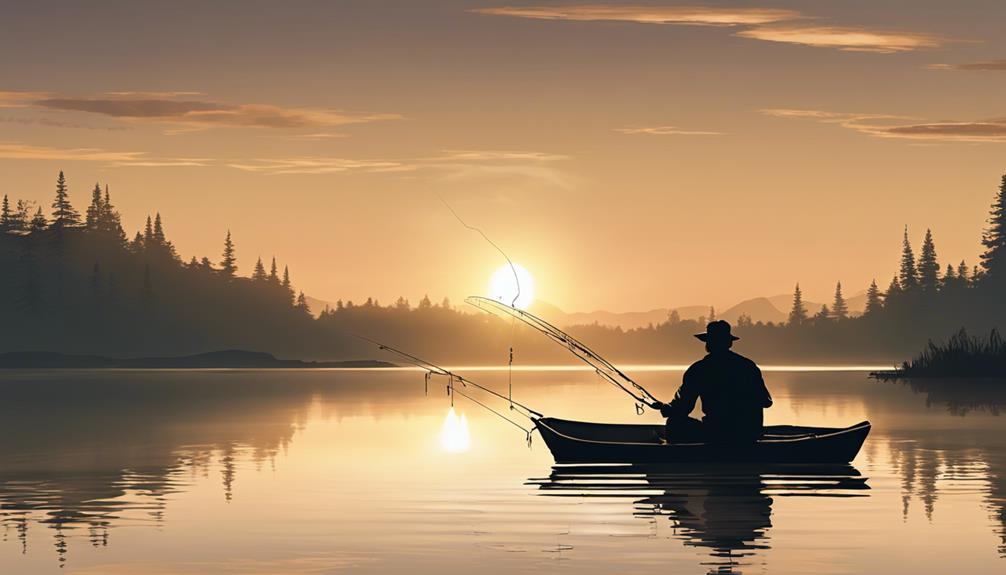
Stay focused and maintain a positive attitude as you wait for the perfect opportunity to reel in a yellow perch. Patience and persistence are key when it comes to angling for these elusive fish.
Here are some tips to help you improve your technique and understand fish behavior:
- Observation is Key: Take the time to observe the water, look for signs of perch activity such as small ripples or baitfish movements. Understanding where the fish are can significantly increase your chances of a successful catch.
- Technique Refinement: Experiment with different techniques such as jigging or using live bait to see what works best in a particular fishing spot. Refining your technique based on what the fish respond to will help you become a more successful angler.
- Stay Patient: Yellow perch can be cautious and may take their time before striking. Avoid rushing your movements and be prepared to wait for the fish to commit to the bait.
- Adapt to Fish Behavior: Fish behavior can change based on factors like weather, time of day, and water temperature. Stay adaptable and be willing to adjust your approach based on how the fish are responding.
Handling and Release
To ensure the well-being of yellow perch and promote sustainable fishing practices, it's essential to handle and release them carefully after catching. Proper handling techniques are crucial for the survival of these fish. When you land a yellow perch, make sure to wet your hands before touching them. This helps protect their delicate skin and scales. Avoid using towels or dry hands as they can remove the protective slime layer that shields the fish from infections.
Ethical release practices play a significant role in the conservation efforts aimed at preserving yellow perch populations. When releasing a perch back into the water, do so gently and without delay. Hold the fish in the water, supporting it until it swims away on its own. If the fish appears exhausted, consider reviving it by moving it back and forth in the water to help oxygen flow through its gills.
Catch and release practices can contribute to the sustainability of yellow perch fisheries. By releasing smaller or unwanted fish, you allow them to grow and potentially reproduce, contributing to the overall health of the population. Remember, each fish you release responsibly plays a part in maintaining a balanced ecosystem and ensuring the future of yellow perch angling.
Frequently Asked Questions
How Can Weather Conditions Impact the Behavior of Yellow Perch and Affect Angling Success?
Weather patterns significantly influence the behavior of yellow perch, directly impacting fishing success. Changes in water temperature due to weather conditions can cause these fish to move to different depths or locations.
For example, during cold fronts, yellow perch may become less active and move to deeper waters. Understanding how weather affects fish behavior is crucial for adjusting your angling strategy to increase your chances of success.
Are There Any Specific Regulations or Restrictions Anglers Should Be Aware of When Targeting Yellow Perch?
When targeting yellow perch, it's important to be aware of specific regulations and restrictions. Some areas might have size limits or restrictions on the number of perch you can keep. Always check local fishing regulations to stay compliant.
Additionally, knowing the best baits and lures for yellow perch can improve your chances of a successful catch. By following these guidelines, you can enjoy a fruitful fishing experience while respecting conservation efforts.
What Are Some Common Mistakes That Anglers Make When Targeting Yellow Perch and How Can They Be Avoided?
When targeting yellow perch, anglers often make mistakes such as using the wrong tackle selection, incorrect retrieval speed, poor bait presentation, and not adjusting to the right depth.
To avoid these errors, ensure you have the appropriate tackle, vary your retrieval speed, present your bait naturally, and adjust your depth according to where the perch are located.
Can Fishing for Yellow Perch Be Successful From Shore, or Is a Boat Necessary for Optimal Results?
When it comes to fishing for yellow perch, shore fishing can be quite successful, even without a boat. Optimal results can be achieved by mastering shore fishing techniques.
Factors like weather conditions play a crucial role in determining success. Understanding the behavior of yellow perch and adjusting your approach accordingly will help you make the most out of your shore fishing experience.
Are There Any Specific Tips or Tricks for Targeting Larger Yellow Perch Versus Smaller Ones?
When targeting larger yellow perch compared to smaller ones, size differentiation is key. Utilize specific techniques to attract bigger fish. Focus on bait selection and presentation to entice the larger perch.
Experiment with various bait sizes and colors to appeal to their preferences. Adjust your fishing depth and speed to target bigger fish effectively.
Conclusion
So there you have it – with the right gear, bait, and techniques, you can improve your chances of catching yellow perch.
Remember to scout out the best locations, consider the time of day, and vary your presentation techniques.
Don't forget to be patient and persistent, as sometimes it takes time to land that big one.
And always handle and release with care to ensure the future of this popular sportfish.
Happy angling!
